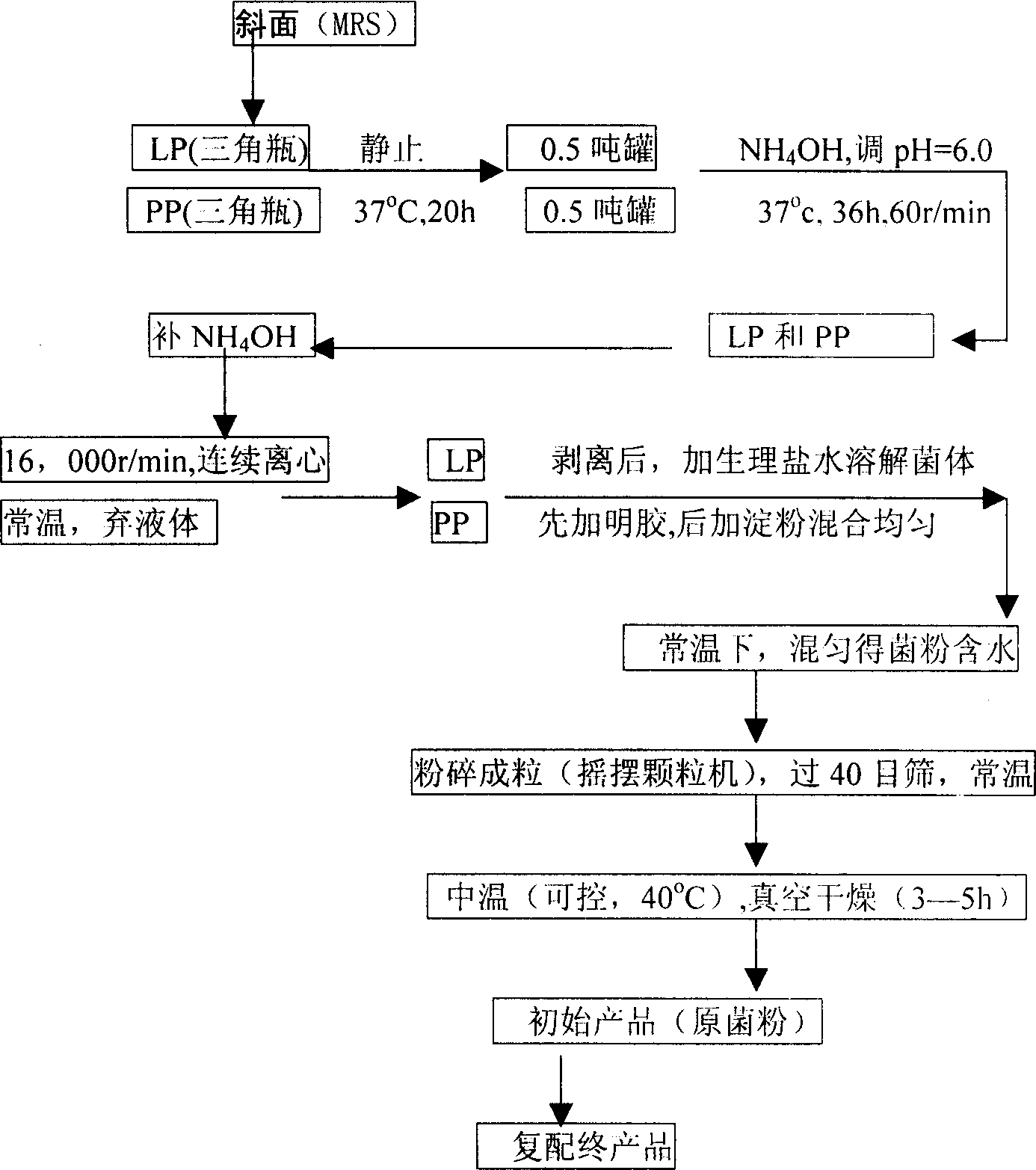Special lactobacillus inoculum for silage and its making method
A technology of lactic acid bacteria and inoculants, applied in the preservation method, bacteria, and application of animal feed raw materials, can solve the problems of high loss rate, high commodity cost, and high cost, and achieve the effect of improving quality
- Summary
- Abstract
- Description
- Claims
- Application Information
AI Technical Summary
Problems solved by technology
Method used
Image
Examples
Embodiment 2
[0054] Low temperature storage is beneficial to prolong the shelf life. In particular, the preservation effect is best at -20°C, followed by 4°C and room temperature; at -20°C and 4°C, the number of viable bacteria during the 90-day storage period of PP bacteria does not decrease at all; the inactivation of viable bacteria at room temperature only 16% inactivated. Under the same conditions, the preservation effect of LP bacteria is obviously much worse. The inactivation rate is 78% at room temperature for 110 days, 0% at -20°C, and <5% at 4°C. Therefore, cryopreservation and vacuum packaging are necessary to prolong the shelf life of this product and ensure product quality. Embodiment 2: product Lactobacillus plantarum of the present invention neutralizes Pediococcus pentosaceae count
[0055] 1. Medium
[0056] (1) 1% sterile peptone buffer solution: Accurately weigh 5 g of peptone and dissolve in 500 ml of deionized water, dispense into conical flasks, place in a steriliz...
Embodiment 3
[0069] Embodiment 3, the influence of lactic acid bacteria inoculant of the present invention on corn silage quality and dairy cow production performance 1. Silage inoculant of the present invention
[0070] The amount of silage used per ton is 10 grams, and the dry powdered inoculant is completely dissolved in water according to the ratio of 5 grams per liter, and then the SIB-HA inoculant is sprayed into the silo with a motorized knapsack sprayer. On the crushed silage layer, after each layer of silage is laid, the inoculant solution is sprayed once, compacted back and forth with a crawler tractor, and other links are treated according to conventional silage measures, which will be used for the feeding test of dairy cows in the next year. 2. Silage quality assessment
[0071] Fresh whole-plant corn (spring corn variety Zhongyu No. 4) was chopped with a cutting machine at a dairy farm in the northern suburbs of Beijing, and the length was less than 50 mm. SIB-HA was inoculate...
Embodiment 4
[0115] On the other hand, the acetic acid levels in the silage of the treatment groups were lower than those of the control group (except on days 5 and 15), with a difference ranging from 5-8% to 29.8% (day 25). Clearly, this is the result of inhibited heterolactic fermentation. With the extension of silage time, the pH value of silage decreased. Moreover, the pH value of the treatment group silage corn was lower than that of the control group at most of the observed time points. The pH in corn silage has a close relationship with the content of lactic acid, but has little relationship with the content of volatile fatty acids. This is consistent with the difference in acidifying ability of these two types of organic acids. Example 4 Test of Dairy Cow Production Performance
[0116] During the first 30 days of the experiment, the silage of the SIB-HA treatment group and the control silage had no effect on the milk production of dairy cows. After 30 days, the effects of trea...
PUM
 Login to View More
Login to View More Abstract
Description
Claims
Application Information
 Login to View More
Login to View More - R&D
- Intellectual Property
- Life Sciences
- Materials
- Tech Scout
- Unparalleled Data Quality
- Higher Quality Content
- 60% Fewer Hallucinations
Browse by: Latest US Patents, China's latest patents, Technical Efficacy Thesaurus, Application Domain, Technology Topic, Popular Technical Reports.
© 2025 PatSnap. All rights reserved.Legal|Privacy policy|Modern Slavery Act Transparency Statement|Sitemap|About US| Contact US: help@patsnap.com


